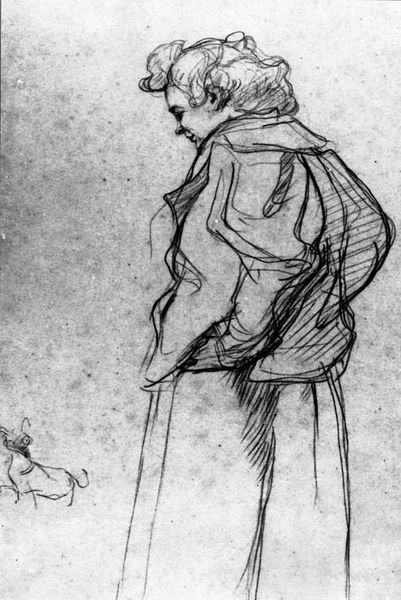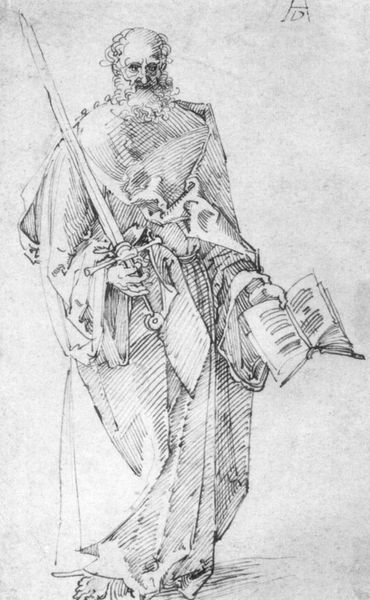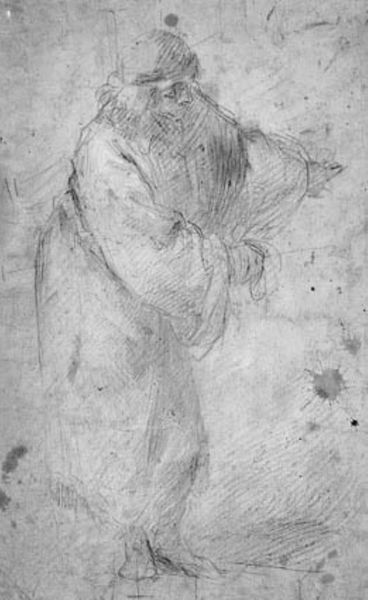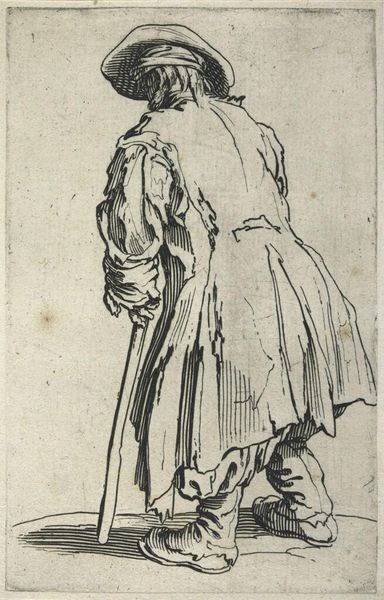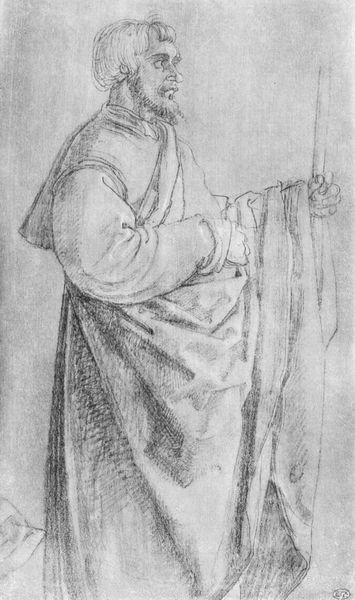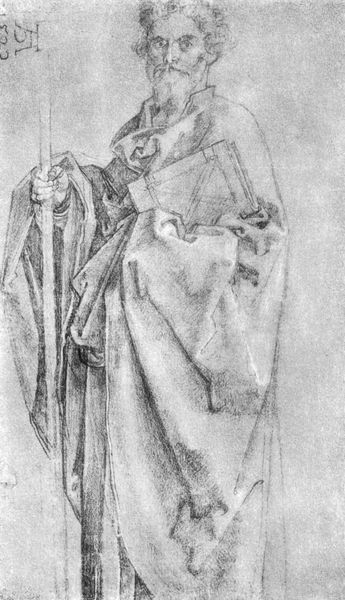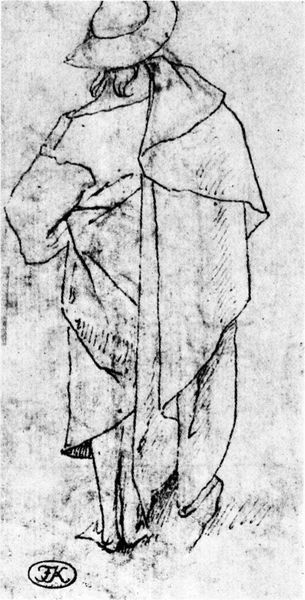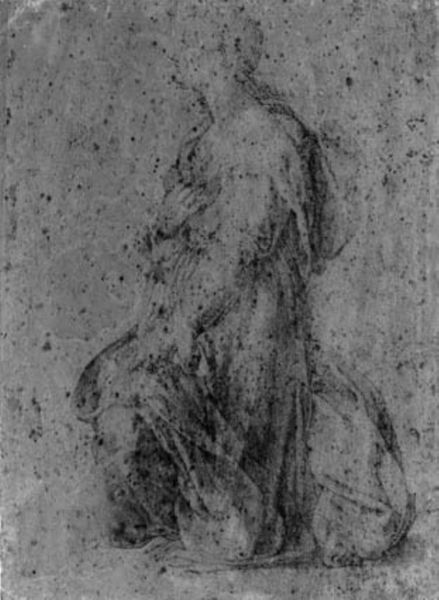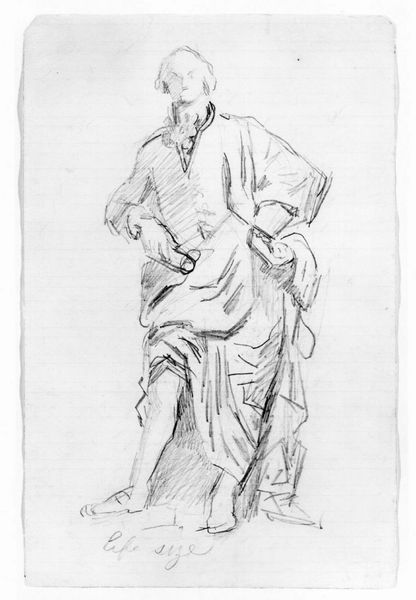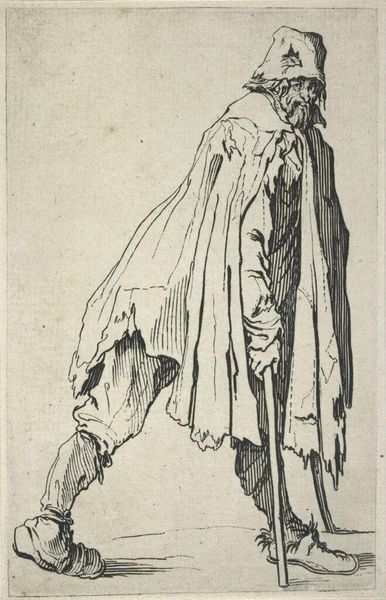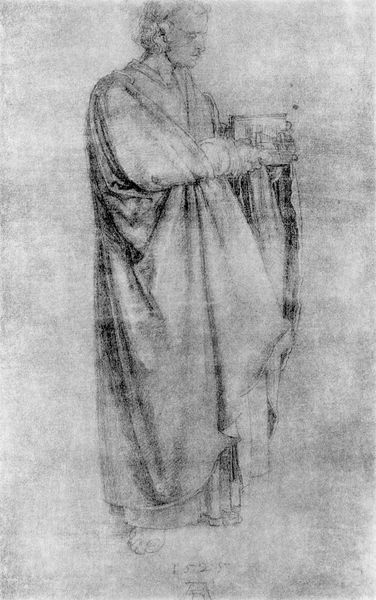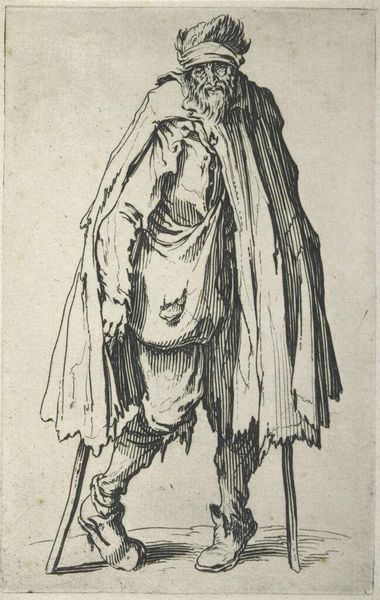
drawing, charcoal
#
portrait
#
drawing
#
charcoal drawing
#
portrait drawing
#
charcoal
#
italian-renaissance
Copyright: Public domain
Editor: Here we have Titian’s "Saint Bernadine," a charcoal drawing from 1531. It's fascinating to see a work from such a renowned painter in such a raw, almost unfinished state. What strikes you most about this piece? Curator: Immediately, I'm drawn to the materiality of the charcoal. It speaks of the labor involved. Charcoal is cheap, readily available. Consider how Titian, accustomed to the luxury of oil paints, chooses a humbler medium for this study. Was this a quick preparatory sketch, or is the conscious use of charcoal suggesting something about Saint Bernadine himself, perhaps alluding to his vow of poverty, simplifying production? Editor: That's an interesting point about the choice of medium relating to the subject. Do you think the social context of the Renaissance, with its burgeoning merchant class, influenced how artists like Titian approached even religious subjects? Curator: Absolutely. Think about the patronage system. Even religious art served the interests of wealthy families. This drawing, though, seems different. Its very existence as a charcoal sketch pushes against the preciousness associated with "high art." Is it a challenge to the perceived distinction between craft and fine art production? Consider what we can know about Saint Bernadine and his cultural milieu from simply looking at this rendering? Editor: So, by focusing on the materials and their socio-economic implications, we can uncover hidden meanings in what might seem like a simple drawing? Curator: Precisely. We move beyond admiring skill to interrogating the systems of value and power that shape artistic creation. The accessibility of the material underscores art as another form of manual labour in the 16th century. Editor: I've never really considered Renaissance art from that perspective. I guess there is still so much I can learn about interpreting the process, resources, and how materials themselves carry so much meaning. Curator: It transforms our understanding, doesn’t it? Instead of seeing just a religious portrait, we now see the evidence of a relationship to process, to labor, and even the commerce surrounding the artwork itself.
Comments
No comments
Be the first to comment and join the conversation on the ultimate creative platform.
